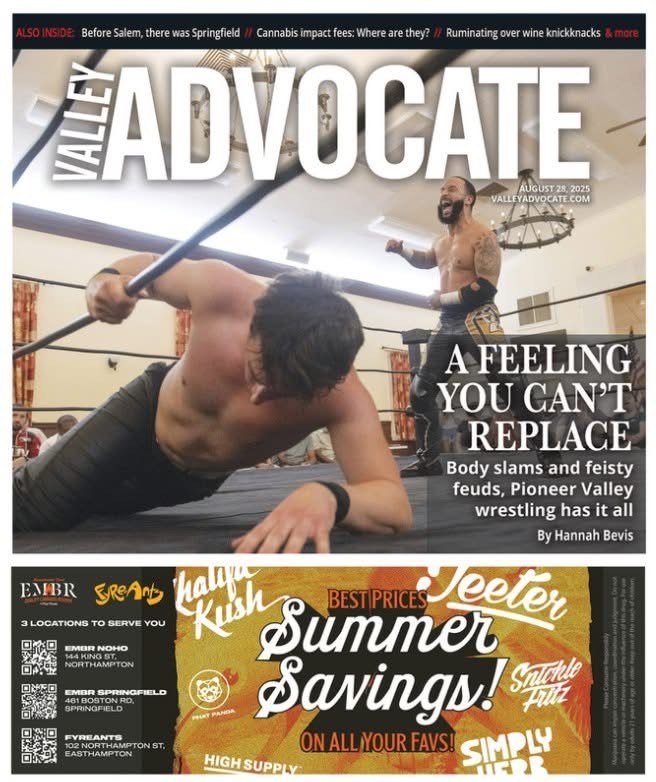I adore the slippery, perfectly sensical but overboard language of James Joyce. His Hibernian tones unspool with gorgeous melody, but demand having on hand several reference volumes, a comfortable chair, and an ability to let go your worries and flow with his powerful current.
It’s safe to say that Joyce’s second most demanding work, Ulysses, is not the expected choice for General Equivalency Diploma classes. For Literacy Project teacher Joe Panzica, Ulysses has, all the same, become a part of the mix he offers students working to get up to speed on GED skills.
“I remembered being defeated by Ulysses a few years back,” says Panzica. “Then I got an iPad app with all kinds of resources. Reading [Ulysses] puts everyone in the same boat—you need assistance and scaffolding.”
It’s that democratizing force that seems central to Panzica’s efforts. “You take any passage from Ulysses—your casual reader will be defeated immediately. It was {Literacy Project Executive Director] Judith Roberts who said, ‘Are you gong to have your students read it?’ I said, ‘Absolutely not.'”
Then, of course, he ended up giving it a try anyway. Last year, his students read the second episode of the novel, and this year, they’re reading the first. The results are clear. “People can do anything with enough support,” says Panzica. “It takes longer—you can’t just fit it into one month. I don’t want to cater to the lowest common denominator. I don’t care who you are—you can’t read that on your own.”
With help, supporting materials and re-reading, says Judith Roberts, students are making headway tackling one of the most daunting challenges in the Western canon: “One of the students told me the more she reads it, the more she understands.”
The challenge of navigating Joyce’s distinctive language often obscures one of Ulysses‘ most winning features. As Roberts says, “The funny parts keep you going.”
And indeed, the book begins with a character in his dressing gown intoning high-church Latin over his shaving bowl and razor.
It’s easy to imagine that students find a sense of empowerment in unravelling the many layers of Joyce successfully, and that’s probably why they stick with the challenge. “It’s not 100 percent required,” says Panzica. “It’s a challenge. But one guy just told me he’s dreaming this stuff! Nobody has quit or abandoned it yet.”
For Panzica, Joyce is one part of the larger puzzle of getting students ready for the GED. Though in the past he’s focused primarily on history, science and politics, Panzica says adding more literature to the mix has worked out.
As to the prosaic, if vital, question of what it’s doing for students’ ability to obtain a GED, Panzica says, “It’s working well, but it’s hard to measure.” He reports that vocabulary is quite important to the GED, and Ulysses offers a vast wealth of new words. Larger issues, of course, are plentiful: “Is [the class] going to broader issues of Modernist portrayal of daily life? I don’t know—but if somebody asks the right question, we’re off to the races.”
It’s refreshing to see literature brought off its pedestal. Yes, Joyce’s writing, like many an author’s, can be tough, epecially if you approach it as something to be wrestled into submission. Open Ulysses, and the urge to look up references can be overwhelming. Do that, and you’re no longer reading Ulysses, but reading an endless chain of reference works. Better to read it without all that, and return later for all the hard work.
Panzica, in addition to encouraging such re-reading, seems to realize there’s an essential component of Joyce that’s key to cracking through the author’s “too hard” reputation: his musicality. Students are using, among other resources, an audio version of the book. Hear the mellifluous sentences that Joyce created, and you more easily get that even Modernism is essentially just storytelling.
Panzica has used other “hard” literature with his students, including works by Yeats, Swinburne and Matthew Arnold. One beauty of bringing such heady words into the classroom is the democratizing force that Panzica talks about, the levelling power of something that requires deeper reading for all comers.
In a time when “literature” has become a genre, the near-mystical “hard stuff” that languishes alongside “easy” but shallow “popular fiction,” what may be more powerful yet is that newcomers to literature come to understand that they need not be scared away from the supposedly high and mighty literati. The rewards of pushing beyond that overplayed barrier between “easy” and “hard” are substantial—the epiphanies of Joyce and the “darkling plain” of Matthew Arnold do, at the end of the day, attempt to get at the heart of what it means to be alive in a way that “popular” fiction seldom tries. Chances are, Panzica is not only helping students get GEDs, but creating new readers with the wider appreciation that publishers’ small-minded genrefication works directly against.
Read Ulysses, as Roberts points out, and you need not be daunted by much of anything literary. Well, except Finnegan’s Wake.
Celebrate Ulysses with a Literacy Project Bloomsday fundraiser June 16, 9-11 p.m., The People’s Pint, 24 Federal Street, Greenfield, www.literacyproject.org.


